These are a type of sensor which utilises a measurement technology that comprises of a ceramic diaphragm and thick film strain gauges to measure pressure.
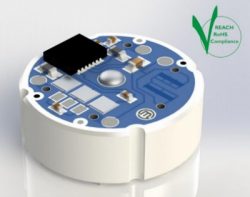
The ceramic diaphragm is a thin, flexible material that is sensitive to changes in pressure. The thick film strain gauges are resistive elements that are printed onto the ceramic diaphragm to form a Wheatstone bridge circuit. When pressure is applied to the diaphragm, it deflects, which causes the strain gauges to change resistance. This change in resistance causes a voltage drop across the bridge which is proportional to the applied pressure.
Ceramics do not react with most chemicals, making them a great choice for chemical processing applications.
It is an excellent electrical insulator which provides a base substrate for printing conductive materials to provide electrical function such as a strain gauge Wheatstone bridge circuit.
It is a very hard material, with an extremely high resistance to abrasion. It’s made from tightly packed and bonded crystalline material, and provides superb protection from media which contain abrasive particles such as slurries and liquids which contain sediment.
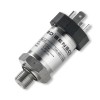 DMK457 Marine Approved Pressure Transmitter - Marine approved pressure transmitter with 4-20mA current loop output for shipbuilding with optional CuNiFe housing for sea-water compatibility
DMK457 Marine Approved Pressure Transmitter - Marine approved pressure transmitter with 4-20mA current loop output for shipbuilding with optional CuNiFe housing for sea-water compatibility DMK 331 Ceramic Diaphragm Industrial Pressure Transmitter - This pressure transmitter can be supplied with a PVDF process connector so that it can be used to measure the pressure of acids and other corrosive chemicals.
DMK 331 Ceramic Diaphragm Industrial Pressure Transmitter - This pressure transmitter can be supplied with a PVDF process connector so that it can be used to measure the pressure of acids and other corrosive chemicals.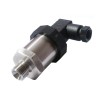 IMP Low Cost Pressure Sensor - Versatile low price pressure sensor with a wide selection of electrical and mechanical options for customisation.
IMP Low Cost Pressure Sensor - Versatile low price pressure sensor with a wide selection of electrical and mechanical options for customisation. Chemical Resistant Pressure Sensor Elements for Electronic Devices & Embedded Product Design & Development - Pressure sensor elements with sensing diaphragms made from alumina ceramic (Al2O3) for electronic & mechanical oem integration into measurement & control instrumentation designs.
Chemical Resistant Pressure Sensor Elements for Electronic Devices & Embedded Product Design & Development - Pressure sensor elements with sensing diaphragms made from alumina ceramic (Al2O3) for electronic & mechanical oem integration into measurement & control instrumentation designs. SSPT Subsea Wet-Mateable Electrical Connector Pressure Sensor - This stainless steel ceramic sensing diaphragm based subsea connector pressure sensor provides a unamplified ratiometric millivolt output or an amplified analogue output signal corresponding to ranges from 0…1 bar (14.50 psi) up to 400 bar ( 5800 psi).
SSPT Subsea Wet-Mateable Electrical Connector Pressure Sensor - This stainless steel ceramic sensing diaphragm based subsea connector pressure sensor provides a unamplified ratiometric millivolt output or an amplified analogue output signal corresponding to ranges from 0…1 bar (14.50 psi) up to 400 bar ( 5800 psi).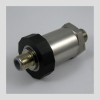 IMP Industrial Pressure Sensor - The IMP industrial pressure sensor, has a piezo‐resisitive ceramic pressure sensor giving it excellent media compatibility
IMP Industrial Pressure Sensor - The IMP industrial pressure sensor, has a piezo‐resisitive ceramic pressure sensor giving it excellent media compatibility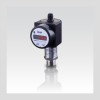 DS201 Combined Pressure Sensor, Display and Switch - Ceramic diaphragm diaphragm based pressure sensor, indicator & electronic switch with pressure ranges from 0-0.4 bar up to 0-600 bar.
DS201 Combined Pressure Sensor, Display and Switch - Ceramic diaphragm diaphragm based pressure sensor, indicator & electronic switch with pressure ranges from 0-0.4 bar up to 0-600 bar. IMP Ceramic Strain Gauge Pressure Transducer - Ceramic strain gauge pressure transducer with a 2mV/V or 10mV/V output signal in pressure ranges from 1 bar up to 700 bar gauge or absolute.
IMP Ceramic Strain Gauge Pressure Transducer - Ceramic strain gauge pressure transducer with a 2mV/V or 10mV/V output signal in pressure ranges from 1 bar up to 700 bar gauge or absolute.
- 5 bar water irrigation pressure transducer with 0 to 5 volt output
- 25 psi steam pressure measurement with a transmitter & display
- 20 kg/cm² range 5Vdc output pressure transducer for potable water
- Dirty water, sludge & sewerage tank level 400 mbar pressure sensor
- Lube oil pressure sensor for use on ship engines to measure up to 10 bar
- Seawater Reverse Osmosis (SWRO) compatible pressure sensor
- Vacuum suction sensor & wall mount digital readout with switched contacts
- Truck loading monitoring using air cushion pressure
- Irrigation water pressure transducer for pressures up to 60 bar
- 300 F protected 100 psi pressure transmitter
- 2 bar g sea water pressure transmitter for marine engine cooling system
- 250 bar pressure transducer with 20 millivolt full scale output
Find out more about Ceramic Thick Film Pressure Sensors to determine which product options and capabilities will best meet your application requirements.
Advantages
- Cost-Effective: The simple design and manufacturing process of ceramic sensors make them more affordable than other pressure sensor technologies.
- Chemical and Abrasion Resistance: Their robust nature makes them ideal for challenging environments.
- Compact & Hygienic: The lack of oil-filled seals or complex internal components makes them compact and easy to clean.
- Non-Metallic: Suitable for applications where metallic components are undesirable.
Disadvantages
- Lower Accuracy: Compared to some other pressure sensor types, ceramic sensors may offer slightly lower accuracy.
- Lower Signal-to-Noise Ratio: This can be a consideration in applications requiring very high precision or sensitivity.
- Limited Pressure Ranges: Ceramic sensors are typically not suited for extremely high or extremely low pressure ranges.
- Vulnerability to Surface Damage: While resistant to abrasion, the diaphragm’s surface can be damaged by sharp impacts.
- Elastomer Seals: The use of elastomer seals (instead of welded components) can be a limitation in certain high-temperature applications.
Applications
The unique properties of ceramic diaphragm thick film strain gauge pressure sensors make them well-suited for a variety of industrial applications:
- Caustic Chemical Processes & Storage: Their chemical resistance makes them ideal for measuring pressure in harsh chemical environments.
- Original Equipment Manufacturer (OEM) Design: Their compact size and affordability make them a popular choice for integration into various equipment and machinery.
- Industrial Printers: The corrosion resistance of ceramic sensors is advantageous in the demanding environment of industrial printers where there are hazardous and aggressive chemicals present.
- Water and Wastewater Treatment: Ceramic sensors’ resilience is useful in monitoring pressure in water and wastewater systems.
- Food and Beverage Processing: The hygienic design of ceramic sensors makes them suitable for applications involving food and beverages.
FAQ
Questions and Answers about ceramic diaphragm with thick film strain gauge pressure sensor technology.
Sensing Diaphragm Material & Performance
How well does the sensing diaphragm material perform for elasticity, hysteresis, repeatability and robustness?
Ceramic is a very hard material, but the range of elasticity is limited, and it is more vulnerable to cracking and rupture than other technologies.
Media Compatibility
How protected is the pressure sensor module assembly against different types of aggressive media, and how customisable is the construction to enhance protection to a particular media type?
The diaphragm, made from ceramic, a hard, chemically inert material, offers high corrosion resistance to hazardous chemicals, including acids and bases. It’s typically housed within a metal or plastic casing that also incorporates the process connector. An elastomer seal creates a barrier between these two components. This design flexibility allows for adaptation to almost any media type by selecting compatible materials for the elastomer seal and process connector.
Oil Leakage
Is there a risk of oil leakage from this sensor, which could impact performance or safety?
Ceramic sensing modules are compatible with most media, eliminating the need for an oil-filled isolation diaphragm to protect the sensing element. Their size and rigidity allow for direct mounting within a process connector, using an O-ring to create a pressure seal. All wire connections are made to PCB solder pads on the module’s reverse side.
Pressure Containment
How well are the internal components joined together to provide a seal to withstand pressurisation that exceeds normal operating conditions, without degradation due to pressure and temperature cycling over the lifetime of the sensing device?
Elastomer O-rings, used to seal between the ceramic diaphragm and process connector, are the most likely component to fail and compromise pressure containment. While they provide a sufficient seal for low to medium pressure ranges and protect the ceramic from differential thermal expansion, exposure to certain fluids or extreme temperatures can compromise their sealing performance. These conditions can cause physical changes in the elastomer, softening or hardening it, and reducing its effectiveness as a seal.
Small Size
How small a pressure sensor is it possible to make with this sensing technology?
Ceramic diaphragm material has a minimum thickness limit to maintain its elastic properties. This, in turn, limits the minimum achievable diameter, as altering either thickness or diameter independently affects the operating pressure range.
Additionally, the lower output sensitivity and higher noise levels of thick-film strain gauges necessitate a certain size to ensure a sufficient output signal. Typically, the sensor module is around 1 inch (25mm) in diameter, but it’s possible to achieve sizes as small as 10mm for higher pressure ranges starting from a few bar.
Corrosion Resistance
How resistant are the media exposed materials to corrosive substances?
Ceramic is highly resistant to most chemicals including acids and base chemicals, providing excellent protection from chemical corrosion, and extending the service life of pressure sensors used in the chemical processing industry, waste management & treatment, marine environment.
Abrasion Resistance
How resistant are the media exposed materials to abrasive substances?
Ceramic is a very hard material and highly resistant to being marked or pitted from fast moving small particles in gases such as dust or powders, or liquids containing solids such slurries or pulp.
High Pressure Spikes
What are the chances of a noticeable effect on the sensors operational performance, or damage to the sensors internal components, from exposure to very dynamic or quickly changing pressures, such as hydraulic pressure spikes or water hammer?
The ceramic diaphragm’s stiffness and limited elasticity make it vulnerable to damage from high-frequency pressure shocks that significantly exceed its pressure range. These shocks concentrate a large amount of energy in a fraction of a second, leading to irreparable damage like cracks or ruptures in the diaphragm’s surface.
Overpressure Handling
How affected is the accuracy performance of the sensor by an overpressure condition, where the pressure exceeds 100% of range?
The overpressure tolerance of these sensors is constrained by the limited elastic range of the ceramic diaphragm, which increases the risk of fracture under excessive pressure. Additionally, the diaphragm thickness required for adequate output sensitivity with thick-film strain gauges further restricts the overpressure rating, necessitating a more conservative design approach.
Very Low Pressure Ranges (<100 mbar)
How well does it perform measuring very low pressures with a pressure range lower than 100 mbar?
Output sensitivity is greatly reduced with very low ranges due to limitations on how thin the diaphragm can be while maintaining sufficient elasticity without fracturing. This also impacts accuracy due to increased temperature errors, vibration noise, and a noisier signal resulting from the lower output sensitivity.
Low Pressure Ranges (100-1000 mbar)
How well does it perform measuring low pressures with a pressure range between 100 and 1000 mbar?
The output sensitivity at lower pressure ranges is suboptimal, similar to the behavior at very low pressure. The noise levels also remain relatively high, making it challenging to match the performance of silicon strain gauge and ceramic variable capacitance sensor technologies.
Medium Pressure Ranges (1-100 bar)
How well does it perform measuring medium pressures with a pressure range between 1 and 100 bar?
The best balance of stiffness and strength is achieved at moderate pressure ranges, providing high sensitivity and low noise without excessive diaphragm deflection, all while staying within the normal operating range.
High Pressure Ranges (100-1000 bar)
How well does it perform measuring high pressures with a pressure range between 100 and 1000 bar?
The best balance of stiffness and strength is achieved at high pressure ranges, providing high sensitivity and low noise. However, overpressure limitations become a concern due to the lower strength of ceramic diaphragms compared to the metal diaphragms used in bonded foil or thin-film strain gauge pressure sensor.
Very High Pressure Ranges (>1000 bar)
How well does it perform measuring very high pressures with a pressure range greater than 1000 bar?
At very high pressures, the lower tensile strength of ceramic diaphragms compared to metal-based diaphragms significantly increases the risk of cracks and sensor failure. This limitation restricts both the achievable pressure range and the overpressure margin as operating pressures approach the upper engineering design limits.
Elastomer seals, used to secure the ceramic diaphragm within the process connector, present a higher pressure containment risk compared to the all-welded designs typically employed in metal-based sensor technologies for high-pressure applications.
Absolute Pressure Ranges
Can this sensor technology be easily adapted to measure absolute pressures, or pressures referenced to a hard vacuum?
Absolute ranges necessitate a flush-mounted diaphragm design instead of the simpler monolithic design. This allows for sealing a vacuum between the sensing diaphragm and the integrated PCB, separated by a ceramic ring support, forming a capsule.
Accuracy
What level of accuracy performance is achievable from the combined effects of linearity, hysteresis, short term repeatability, temperature errors, and long term stability?
The accuracy performance is limited by a less precise manufacturing process and the use of different materials for the strain gauges and diaphragm. These materials tend to be softer and less uniform than those used in other technologies. Additionally, the printed strain gauges pose a greater risk of delamination compared to implanted strain gauges such as thin-film or semiconductor types, further contributing to lower accuracy.
Output Sensitivity
What is the level and quality of the output produced from the transducer technology, before any signal conditioning electronics is added?
The use of larger, thicker strain gauges and limited diaphragm deflection to prevent fractures result in lower output sensitivity compared to other pressure sensor technologies. This reduces the overall output signal before signal conditioning. Additionally, the composition of thick-film strain gauges leads to noticeably higher noise levels on the output due to fluctuations in the electrical current flow.
Frequency Response
How quickly does the sensor’s output respond to changes in pressure?
The response time of variable capacitance ceramic diaphragm technology is relatively slow compared to thin-film or silicon chip strain gauge technologies. This is primarily attributed to the larger and heavier diaphragm, which exhibits higher inertia, impeding its rapid movement in response to pressure changes. Additionally, the signal conditioning process, which involves rectifying and filtering an AC signal to generate a DC output, introduces further delays due to the inherent time constants of these filtering circuits.
Compare with other pressure sensor technologies
How do pressure sensors that use a ceramic diaphragm with thick film strain gauges compare to other technologies?
| Sensing technology | Si-Chip | Si-Isolated | Thick-Film | Var-Cap | Thin-Film | BFSG |
|---|---|---|---|---|---|---|
| Sensing diaphragm material | Excellent | Excellent | Fair | Fair | Good | Good |
| Media compatibility | Bad | Good | Excellent | Excellent | Good | Good |
| Oil fill leak risk | Excellent | Bad | Excellent | Excellent | Excellent | Excellent |
| Pressure containment | Poor | Good | Fair | Fair | Excellent | Excellent |
| Small size | Excellent | Good | Fair | Poor | Good | Fair |
| Corrosion resistance | Bad | Good | Excellent | Excellent | Fair | Fair |
| Abrasion resistance | Bad | Bad | Excellent | Excellent | Fair | Fair |
| High pressure spikes | Bad | Poor | Fair | Poor | Good | Good |
| Overpressure rating | Good | Excellent | Fair | Good | Poor | Poor |
| Very low pressure < 100mb | Good | Poor | Bad | Good | Bad | Bad |
| Low pressure 100…1000mb | Good | Good | Poor | Good | Bad | Bad |
| Medium pressure 1…100bar | Fair | Excellent | Excellent | Fair | Good | Fair |
| High pressure 100…1000bar | Bad | Good | Fair | Bad | Excellent | Good |
| Very high pressure > 1000bar | Bad | Bad | Bad | Bad | Good | Excellent |
| Absolute pressure ranges | Fair | Excellent | Good | Good | Bad | Bad |
| Accuracy | Excellent | Good | Poor | Fair | Good | Fair |
| Output Sensitivity | Excellent | Excellent | Fair | Excellent | Good | Fair |
| Frequency response | Excellent | Good | Fair | Poor | Good | Fair |
| Comparison rating (90 max) | 56 | 63 | 59 | 61 | 62 | 57 |
Which technology to use for your application?
Find out whether ceramic thick film pressure sensors will be the most suitable choice for your application compared to other technologies.
Checklist for ceramic thick film pressure sensor requirements
Define your ceramic thick film pressure sensor requirements using this checklist:
- Pressure range?
- Overpressure?
- Output signal?
- Dynamic response?
- Accuracy?
- Electrical connection?
- Process connection?
- Size dimensions?
- Process media type?
- Media temperature range?
- Environment temperature range?
- Environment shock and vibration?
- Shock pressures?
